- Home
- Instruments
- Gear
- Recording
- Lessons
- Reviews
- Blog
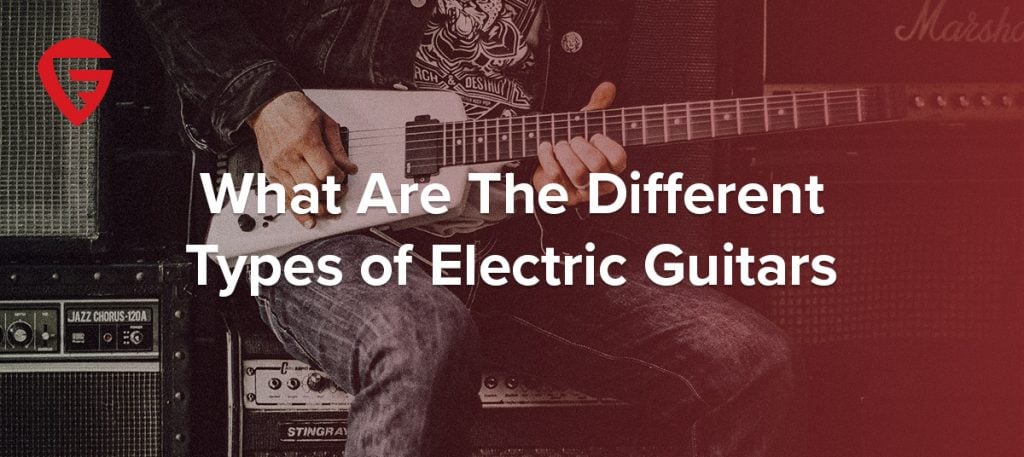
Electric guitars are a bit like cars – they all do roughly the same job, but they look and perform completely differently depending on the brand and the model!
This is why we have put together this article, to help you learn about some of the most iconic electric guitar styles on the market – when they were created, what makes them unique and some of the legendary players that famously use them.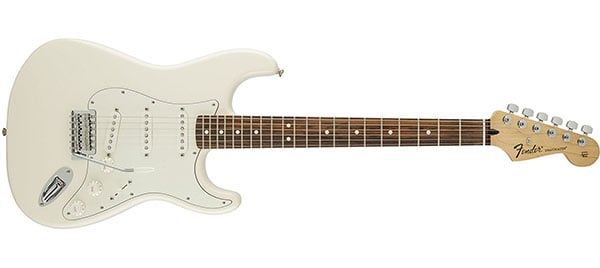
There are electric guitar icons and then there is the Fender Stratocaster – the king of electric guitars in the eyes of many players. Introduced by the great Leo Fender in 1954, the Stratocaster (commonly known as the Strat) has been in production ever since and remains one of the most popular electric guitars that has ever existed.
While Fender created and still makes the majority of Strats, other manufacturers use the design for their own electric guitars, including Squier (a Fender subsidiary), Yamaha and a wide range of budget brands.
The Strat – with a generous scale length of 25.5” – features an attractive double-cutaway design with soft contours that make it a seriously comfortable guitar to hold, whatever your body shape. Bolted onto the guitar, Stratocaster necks are almost always made from maple and capped with either a maple or rosewood fretboard. The body woods will depend on the price, with basswood bodies a regular sight in the budget market and alder more common as the cost increases.
Strats are characterized by their pickup configuration, with three single-coil pickups (S-S-S) and a five-way pickup selector switch offering guitarists plenty of versatility. This is why they are seen in all genres of music from funk and pop to blues and rock. Alternatively, you can find some Strats that feature a H-S-S (humbucker and two single-coils) or a H-S-H pickup configuration, which work better for heavier styles of music like metal.
The typical Strat sound is bright and sparkly, with sweet chiming tones that cut through the mix, making them great for both lead and rhythm players.
As for hardware, a good Strat usually features a floating tremolo bridge with a whammy bar, allowing for all kinds of on-board vibrato effects.
Used by: Jimi Hendrix, Eric Clapton, Jeff Beck, Buddy Holly, Yngwie Malmsteen, Ritchie Blackmore, Eric Johnson, John Frusciante, The Edge, Mark Knopfler, David Gilmour and Stevie Ray Vaughan.
Classic Strat track: ‘Cliffs of Dover’ by Eric Johnson
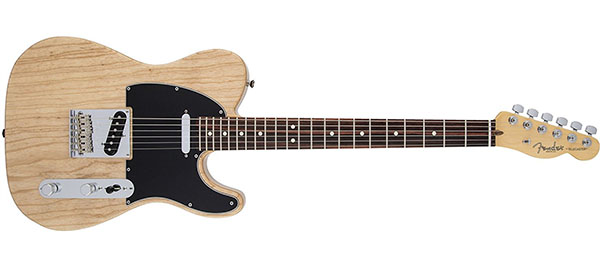
The Telecaster (commonly known as the Tele) is another absolute icon from Leo Fender, which predates the Strat by a couple of years having been introduced to the world in 1951. It became the first successfully mass-produced solid body electric guitar and has been in production ever since – a testament to how good a Tele really is!
When it comes to design, the Tele is a little boxier than the Strat, with a distinctive single cutaway and familiar slim headstock. As with a Strat, Tele body woods depend on the price category of the instrument, but the neck will almost certainly be made from maple and bolted onto the guitar.
The pickup setup on a Telecaster is as distinctive as a Strat although completely different. While you can find humbuckers and Strat-style pickups on some models, Telecasters will typically feature two single-coil pickups and a three-way selector switch. The bridge pickup will usually be slanted and sitting in a fixed ‘ashtray bridge’, while the neck pickup is smaller and usually features a lipstick cover.
On the subject of the bridge, traditional Telecasters have a string-through-body design and tend to use three brass saddles (offering a twangier sound), while modern variations use the more popular six steel saddle setup, which offer better intonation.
When it comes to sound, Teles provide plenty of brightness and twang – the classic ‘frying pan tone’ – associated with blues, country, funk and classic rock in particular. However, Tele neck pickups are one of the least popular pickups around, as they can be quiet and a bit lifeless (although this completely depends on the pickup and manufacturer).
Used by: Keith Richards, Bruce Springsteen, Jeff Buckley, Prince, George Harrison, Muddy Waters, Roy Buchanan, Danny Gatton, Brad Paisley, Jeff Beck, Jimmy Bryant, Mike Stern and Freddie Stone
Classic Tele track: ‘Stairway to Heaven’ by Led Zeppelin
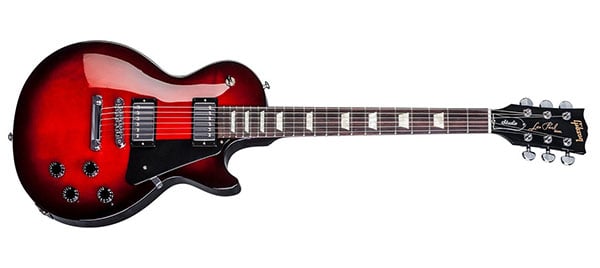
The only guitar that can truly rival the Tele and the Strat in terms of history and prestige is the Gibson Les Paul. This legend arrived on the scene in 1952, having been designed by the guys at Gibson along with input from the American jazz guitarist Les Paul.
The Les Paul design is as legendary and distinctive as some of Fender’s iconic models, with a shorter 24.75” scale length, a curvaceous single-cutaway body and a set neck, which are both typically mahogany in their construction. This setup has been replicated by a wide range of manufacturers including Epiphone (a Gibson subsidiary), ESP and Kramer along with many budget brands.
Whereas Strats and Teles typically use single-coil pickups, Les Pauls are synonymous with the humbucker, usually featuring two (one at the neck and one at the bridge), with a three-way ‘rhythm/treble’ selector switch on the top bout. There are also usually volume and tone controls for each pickup, offering great versatility. Other hardware comes in the form of a fixed tune-o-matic style bridge with a stopbar tailpiece.
The result of the construction and pickup configuration is a fat, thick, powerful tone with tons of sustain, which is why the Les Paul is such a staple of rock and metal, although it is equally well used in the world of blues.
Used by: Les Paul, Slash, Jimmy Page, Paul McCartney, Frank Zappa, Pete Townshend, Zakk Wylde, Eric Clapton, Gary Moore, Bob Marley, James Hetfield and Billy Gibbons.
Classic Les Paul track: ‘Sweet Child O’ Mine’ by Guns N’ Roses
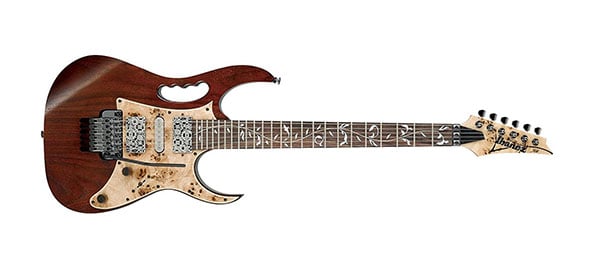
The Superstrat is a modern style of electric guitar that is synonymous with rock and metal, usually produced by brands such as Ibanez (RG), Kramer (Baretta) and Jackson (Soloist). Superstrats were born in the 1980s (the age of big hair and heavy shredding) and – despite falling out of favor in the 1990s – are once again popular today.
As the name suggests, a Superstrat uses the double-cutaway shape and scale length of a Stratocaster albeit with body, neck and hardware enhancements to make it an edgier, faster electric guitar. Typical modifications from an original Strat include thinner profile necks, 24 frets, bold paintjobs and locking vibrato systems (excellent for tuning stability and heavy divebombs!).
A Superstrat will also make use of humbuckers as its primary pickup, usually at the neck and bridge positions with a single-coil in the middle offering huge versatility. Some Superstrats use active pickups to deliver louder, more articulate tones that are perfect for high-speed, high-gain playing. Don’t forget to crank up the distortion!
Used by: Eddie Van Halen, Steve Vai, Kirk Hammett, Paul Gilbert, Dexter Holland, Michael Angelo Batio, Joe Satriani, John Frusciante and Fredrik Thordendal.
Classic Superstrat track: ‘For the Love of God’ by Steve Vai
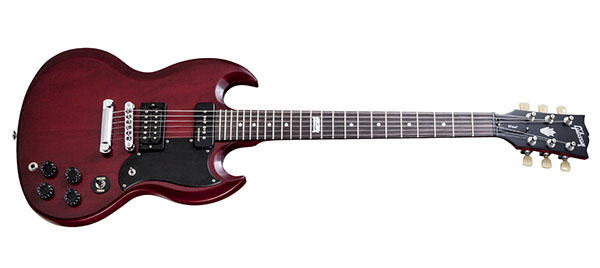
In 1961, Gibson completely redesigned the Les Paul – which was suffering from waning sales. However, it is said that Les Paul didn’t want his name attached to the modified guitar as he didn’t like the new design. Gibson therefore renamed it the SG (which simply stands for ‘Solid Guitar’) and continued making both guitars. Ultimately, it is the SG that remains the brand’s best-selling guitar of all time.
Traditionally the SG is made with a flat-top solid mahogany body, featuring the iconic asymmetrical double-cutaway shape, a 24.75” scale length and a 22-fret set neck. Both the body and neck are slim and fast, making it comfortable, lightweight and perfect for duckwalking around on stage with (a la Angus Young).
The SG is close to an original Les Paul in terms of hardware and controls, with a fixed tune-o-matic bridge and two humbuckers at the neck and bridge positions. The SG is naturally perfect for classic and heavy rock, and it tends to produce a little more bite than a Les Paul.
Used by: Angus Young, Tony Iommi, Jerry Garcia, Derek Trucks, Frank Zappa, Pete Townshend, Eric Clapton, Mick Box, Daron Malakian and Thom Yorke.
Classic SG track: ‘War Pigs’ by Black Sabbath
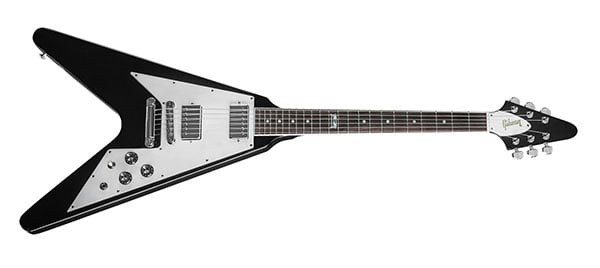
Gibson’s Flying V was introduced in 1958 and it took a while for the ‘futuristic’ axe to establish itself, actually falling out of production just a year later. However, it eventually became a hit in the 1960s, when legendary guitarists such as Dave Davies (The Kinks) and Jimi Hendrix began performing with it.
While finding an original model is very rare, Flying Vs are still in production today, proving a popular guitar for stage performances due to the iconic and eye-catching V-shaped design. This design means it feels a little less comfortable and balanced than some of the others on this list, although the unhindered access to the highest frets is wonderful for lead players and shredders.
As for hardware, the Flying V will traditionally feature two humbuckers, placed at the bridge and the neck, which offers a thick, beefy tone that perfectly suits rock and metal playing.
Used by: James Hetfield, Kirk Hammett, Jimi Hendrix, Joe Perry, Billy Gibbons, Dave Davies, Tim Wheeler, Steve Jones, Lenny Kravitz, Marc Bolan and Dave Mustaine.
Classic Flying V track: ‘Master of Puppets’ by Metallica
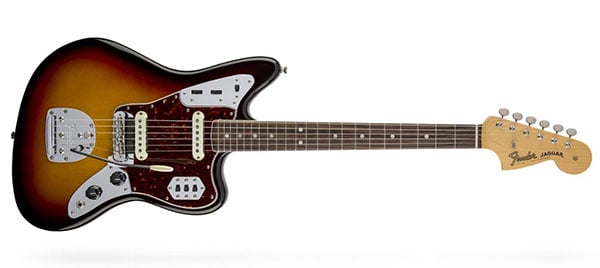
One of the more unusual guitars on this list is the Fender Jaguar, which hit the market in 1962. The Jag had a slow beginning and – even though it was quite popular with surf rockers – it failed to hit the mainstream and was discontinued. However, it was eventually picked up again in the early 1990s, becoming the must-have guitar for alt-rock musicians such as Kurt Cobain.
With a relaxed asymmetrical body shape and similar electronics, the Jaguar was clearly influenced by Fender’s earlier Jazzmaster, although the Jaguar was the first Fender model to feature a shorter 24” scale length and a 22-fret neck, making it a breeze to play.
The Jaguar’s hardware is also very noteworthy. Aside from the duo of single-coil pickups (although some feature humbuckers), a Jaguar features a dual-circuit setup, offering players huge versatility thanks to both separate rhythm and lead circuits that have their own controls.
Used by: John Frusciante, Johnny Marr, Bob Dylan, Thurston Moore, Kurt Cobain, Joe Pass, Jimi Hendrix, John Squire and Scott Hill.
Classic Jaguar track: ‘Surfin’ Bird’ by The Trashmen

Reader Interactions